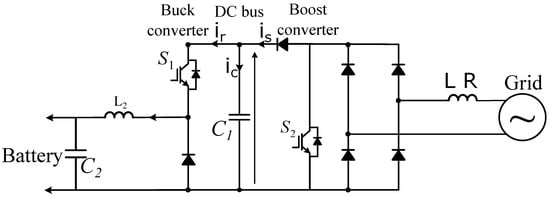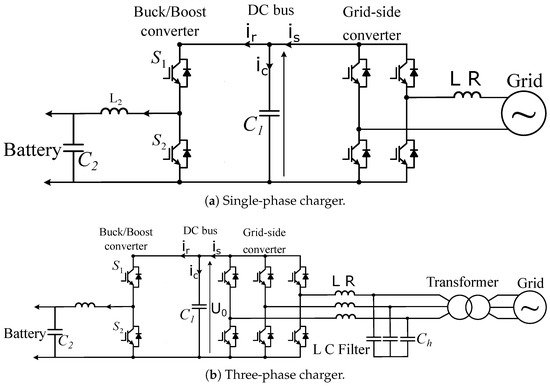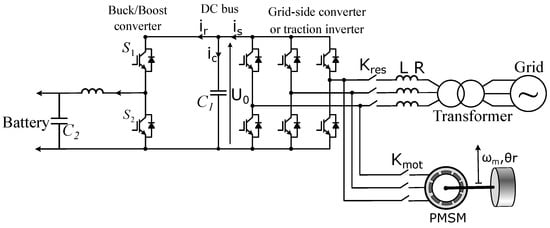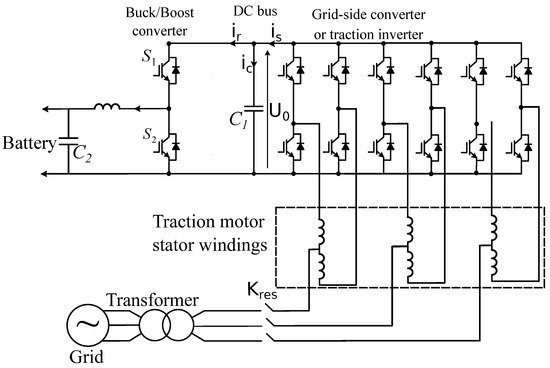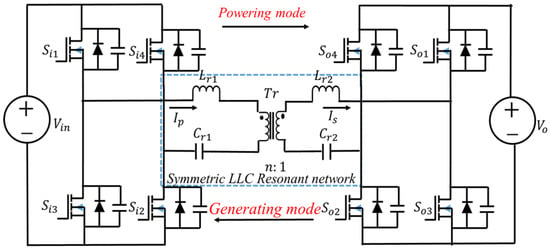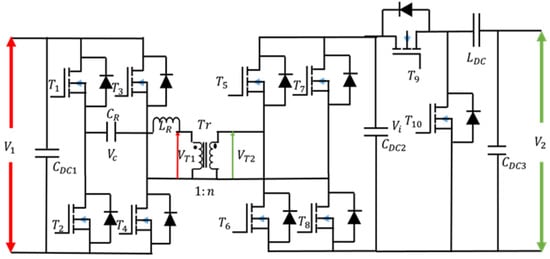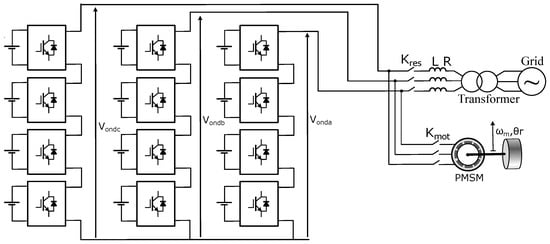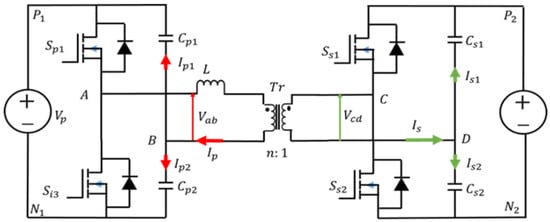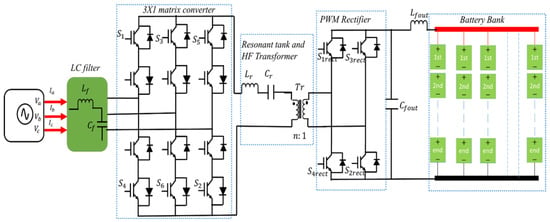TEV chis paper proposes a design for the Barging requires either single-phase or three-phase charging stations that have unidirectional electric vehicle charger which is capable of doing both the Grid to Vehicle and Vehicle to Grid power transfer, and the intenal or bidirectional power flow capabilities. Moreover, EV charger can make use of traction will be made through an automatic smart energy management system(EMS). A simplepowertrain equipment to achieve high power electronics topology is used. The user can adjust the output of this charger by using the control signal provided by the controller. The simulation result obtained shows that it has an interaction between the charger and an Energy Management System(EMS) in a residencedensity and weight reduction in order to save space in the vehicle while increasing efficiency.
1. Specifications
Genormous number of automobiles across the world has caused a significant increase in emissions of greenhouse gases, which pose a grave and mounting threat to modern life by escalating global warming and polluting air quality. These adverse effects of climate change have motivated the automotive sector to reform and haveally speaking, an electric vehicle charging station should comply with the following specifications and deliver a number of other functions, particularly durability, efficiency, and performance:
-
Implement a power factor correction: absorb a sinusoidal current free of harmonics with a power factor equal to 1.
-
Bidirectional power electronics topology that allow participating to the energy storage on the grid in order to implement a vehicle-to-grid or vehicle-to-home concept.
-
Using the traction inverter in the EV charging power electronics.
-
No additional filtering inductance by using traction motor windings.
-
Possibility of balancing battery elementary cells by implementing a part of battery management system functions.
-
Contactless power transfer.
2. Power Electronics Solutions
To pushmed the drive towards the transformation to fully electric. Cet these EV charging time has been identified as one of the key barriers in large-scale applications of Electric Vehicles (EVs). In addition, various challenges are associated with the formulation of a safe charging scheme, which is concerned with appropriate charging converter architecture, with the aim of ensuring a safe charging protocol within a range of 5–10 min. This paper provides a systematic review of thharging technologies and their impacts on battery systems, including charger converter design and associated limitations. Furthermore, the knowledge gap and research directions are provided with regardstations requirements, several power electronics solutions have been proposed and implemented by car manufacturers and energy providers. These solutions are briefly presented and discussed in the following subsections. The readers may refer to the challenges associated with the charger converter architecture design at the systems level.
1. Introduction
Refollowing paper for more details on power elec
ent
ly, Electric Vehicles (EVs) have gainedronics configurations popular[1].
2.1. Unidirectional Battery Charger
Uni
ty over tradi
rectional
fossil fuel-based automobiles, which cause environmental pollution by releasing greenhouse gas emissions (GHG) [1,2,3,4]. EVchargers have a diode bridge rectifier (DBR) ass
no
t only curtail carbon emissions but also reduce the burden of fossil fuel dependency [5].ciated with a filter stage and a KeyDC/DC bottlenecks in enabling larger EV adoption includeconverter, as shown in Figure 1. tThe
high cost due to batteries, range anxiety dueDBR can be either single-phase (Figure 1) to
reduced battery capacity and speed, high charging time, and lack of sufficient charging infrastructures [6,7,8]. To meer three-phase to increase t
the cha
llenge of time, it is possible to develop highly efficient, reliable, and compact EVs by enabling game-changing battery charging technologies with the aim of reducingrging power. Moreover, a high frequency isolation transformer is used to ensure isolation during EV charging
time and enhancing battery capacity [9,10,11]. It is . This converte
xpectedr t
hat EV penetration by 2030 will be approximately 30% of all vehicles sold that will be either electric-powered or hybrid [12]. China, opology does not have the ability t
heo US, and Europe are, so far, the biggest EV exporters worldwide, and the sales volume of EVs increased at a rate of 94% between 2011 and 2015. The Li-ion battery itself accounts for 40% of the total production cost of EVs. Prices of Li-ion batteries were reduced from $600 per kWh in 2012 to $250 per KWh in 2017 [13]. The recent tuse EV battery as energy resource and then inject power to the utility grid. However, it a
rget is set tllo
push the price drop further to $100 per KWh by 2024. EVs have become a hot topic of research since 1990, therefore it is important to understand the development trend and technological barriers.
Charging ws providing ancillary services, mainly voltage regulat
ime i
s the key bottleneck, particularly for Battery Electric Vehicles (BEVs), where it ranges from 2 to 6 h [14]. Thron, by supplying or absorbing reactive power from the
e classifications have been made by the U.S. Department of Energy based on main grid without EV battery discharging
EV power capac.
Figure 1. Unidirectional battery charger for EVs.
Uni
ty. The fdir
st includes charging EVs at less than 5 kW [9,15,16], ectional batt
he
second covers the fast-charging power range between 5 and 50 kW, and the last one denotes a charging power range greater than 50 kW [17]. The fry chargers offer a simple and easy-to-control soluti
rst two
are referred to as on-board chargers that are integrated into the vehicle, while the third one is referred to as an off-board charger, which is basically equivalent to a fuel station [18]. The rn to manage EV fleet and meet the requirements for safe, reliable, and cost-compe
ducti
on in the size of the off-board charger is the future focus of research. Still, the on-board charger can charge the battery on a domestic load. However, the mileage capacity is restricted to 240–300 Wh/mi [19]. Thustive EV charging solution. However, with the increasing penetration of EV in the transportation sector, i
f t
he vehicle is nee is intended to
make an extra trip urgently outside the daily drive, it would require fast-charging solutions.
EV cplay a key role in th
arginge systems can be categorized into three groups based on the power levels, as shown in Table 1. Usualmain grid regulation (mainly,
thfreque
chargers with a power level below 3.3 kW (1-phase) are termed slow chargers or Level 1 chargers with 120Vac outletncy and voltage regulation), which can
be integrated in-to the vehicle power train (on-boardnot be totally ensured using unidirectional EV charger
) or can be installed as a convenience outlet at home (wall-charging outlet). The charging time for Level 1 charger is higher which is 4–11 h for 1.4 kW (for PHEV battery of 5–15 kWh capacity) and 11–36 h for 1.9 kW (for EV battery of 16–50 kWh capacity). Level 2 chargers can charge EV batteries with a power of up to 22 kW for both 1-phase and 3-phase with 240Vac (US standard) and 400Vac (EU standard)s. Consequently, there is a need for bidirectional power flow topologies that allow EVs to act as a distributed energy storage on the power system [20][2][3].
S 2.2. Bidirectional Battery Charger
Bi
mdi
lar to Level 1rectional EV chargers
, they can either be part of the vehicle or part of the dedicated Electric Vehicle Supply Equipment (EVSE) outside the vehicle. Three types of charging time scenarios are available for Level-2 charger such as 1–4 h for 4 kW with PHEV battery capacity of 5–15 kWh, 2–6 h for 8 kW with EV battery capacity of 16–30 kWh and 2–3 h for 19 are composed of two stages, which are a single-phase or three-phase active front end (AFE) followed with a bidirectional DC/DC converter, as depicted in Figure 2.
2 kW with EV capacity of 3–50 kWh [20]. OAFE is a bidirection
al the other hand, Level-3 chargers have power levels up to 200 kW and they are always outside the vehicle as a part of EVSE. Level-3 charger has both ac and dc power facilities with voltage outlets of (208–240) Vac and (200–600) Vdc. It is mostly applicable in commercial area analogous to a filling station. It is termed as fast charging prototype due to its less charging time which is 0.4–1 h for 50 kW prototype and 0.2–0.5 h for greater than 90 kW prototypeAC/DC converter that allow regulating the DC bus voltage and controlling quasi-sinusoidal grid currents, while ensuring a unity power factor (current phase angle control) or exchanging reactive power with the power grid. The
battery capacity of the dedicated EVs ranges from 20–50 kWh [20]. Asecond stage allows controll
ing th
ree types of chargers convert AC grid voltage to suitable DC voltage to charge the e charging current of the battery. The
power levels determine how fast the battery will be fully charged from a specified state-of-charge (SOC) level [21].
Table 1. Charging characteristics and required infrastructure of some manufactured PHEVs and EVs (data collected from [14,15,16]).
The DC/DC converter can be either isolated or non-isolated c
hargi
ng characteristics and required infrastructure of some of the commercially available Plug-in electric vehicles (PEVs) and EVs are shown rcuit configurations as discussed in
Table 1[1].
Most of tTh
e vehicles have either a Level 1 or Level 2 charger as a part of their vehicle power train (on-board chargers). However, Level 3 fast charging is the quickest option to charge any EV battery if the required connector is available in the vehicle.
Ais converters topology offers a bidirectional power exchange with the main grid to support the grid during congestion periods and behave U.S.as Department of Eadditional energy
report in 2008 [22] pointestorage d
ou
t that charging location is critical for buring off-peak periods.
Figure 2. Bidirectional battery charger for EVs.
Bilding future EV mobility and classified the locations for EV rectional charging into three groups: (i) Residential garage charging (Level 1 and Level 2), (ii) apartment complex charging (Level 1 and Level 2), and (iii) commercial facility chas several advantages compared to unidirectional charging (Level 2 and Level 3). For both the home and apartment scenarios, it is assumed that a majority of the . During EV charging will be performed at night. For commercial facilities, it is assumed that charging is primarily performed during normal business hours.
Soperation, it has been shown that the use of bidire
veral revcti
ew papers ononal charging
technologies of EVs can be found in the literature based on a number of factors [23,24].can increase the benefits by Inat [25], lea
st 25% comp
are
hensive review of EV charging station infrastructure, standards of d to standard unidirectional charging
cables, cords, and connectors, the impact of semiconductors devices used in converters on charger performance and cost, and the integration of athrough the vehicle-to-grid (V2G) principle. In bidirectional charging
system with the microgrid for better energy management systems have been analyzed. The technologies related to EVs, EV charging systems, and optimization strategies to obtain the available output have been represented in another review [26]. A, the use of the battery capacity of EVs can also contribute to ancillary services, such as maintainin
g overview of the recent EV market, standards related to charging, grid integration and safety, charging infrastructure, and effects of EV penetration are discussed in [24]frequency and voltage at the nominal levels and controlling congestion risks.
AIn
overview of the diverse kinds of EVs that are commercially available and associated with deed, this distributed energy s
torage systems (ESS), as well as a detailed review of public and residentialystem allows can provide/absorb active power
outlets, EV charging cords, and charging stands based on various power levels, was discussed in [27]. The nto maintain nominal grid frequency (global parameter) and supply/absorb re
ga
tive impact of EV charging on the utility grid and the safety code associatedctive power to regulate voltage level (local parameter). 2.3. Integrated On-Board EV Charger
AC with EV charging
systems has also been analyzed. A converter is an integral part of the EV charging system [28]. In [29], a reviewtypically needs an on-board AC/DC power of converter
architectures,. Quite inter
national standards, and EV charger manufacturers was analyzed. The architecture of theestingly, the motor and the motor drive inverter, which conver
ter topologies and the reliability associated with these topologies are considered to be important factors to evaluate the effectiveness of these converter topologies, which were not considered in the aforementioned studies.
Diffts the DC power from the battery into AC power for the motor, can also be used as the on-board charger for the batter
enty factors[4]. have to be coIn
sidered to design the converter topologideed, the existing devices of
EV chargers, such as the efficiency, power factor, isolation, harmonic contents, filter, and switchingthe drivetrain are reconfigured with minimum additional components
[30,31,32,33],to allow
hich have been highlighted in this paper for both DC-DC and AC-DC recharging. This eliminates the need for a separate AC/DC power converter
s. The reliability of electronic components associated with EV converter technology ensures the reliable performance of the entire system [34,35]. Reli for the on-board charger. Since the drivetra
bili
ty assessment of the n power
electronics conconverter
from manufacturer, seller, and customer standpoints is crucial to verify the reliable operation of is usually high power (greater than 100 kW), this also means that the EV
s in all environmental conditions [36,37]. Adap can reach quit
ation of safe
and reliablehigh charging
methods ensures a long lifetime and better performance of EV batteries by limiting the temperature [38]. The rates (greater than 22 kW). The challenge is to design the motor d
erive
lopment of the fast-charging converter accelerates the revolution toward sustainable transportation through EVs [39,40]. Therefore, different and its control to provide the dual functionality of EV charging
mwhe
thods and charging strategies are important factors in evaluating then stationary and EV propulsion when in motion [5][6]. Int
otal pe
rformance of the EV. EV technologies are facing various challenges such as slow charging, isolation, power loss due to cograted on-board EV charger is a bidirectional EV charger that uses a single inverter
structure, power electronic component reliability, and thermal condition/rectifier for all operation modes of EV
batteries [41].
VeThi
cle to Grid (V2G) is not only a promising solution to cope with a largs topology allows minimizing the number of
EVs considering all the aspects of charging and discharging EVs but also a possible way to boost economic growth [42,43].power electronic devices since the same power switches are used both for EV Cletra
rly, the need to develop reliable and fast chargers is not only important to remove the range barrier, but also to improve the robustness of the EV in the energy transfer context. Therefore, the specific goal of this review is to ction/propulsion, braking, and battery recharging. This way the cost, size, and weight of EV charger are considerably reduced. A topology of such power conversion system is provide
a detad in Figure 3 i
ledn overview of the current development of the chargingwhich the same converter
architecture and converter reliability, highlightis used for supplying the
challenges and potential solutions related to EV motor and recharging
.
The reviewEV started by collectingbattery. In Figure 4, the
latest jo
urnal papers from major databases such as Scopus and the Web of Science with keywords including EV Charging, EV Charger Conn-board charger configuration uses the traction inverter
, EV charger/converter reliability, Thermal challenges in EV charging, and Vehicle to Grid. One hundred and forty papers were selected for this review with particular focus given to the key topics related to EV converter topology and reliability and EV charging. This paper first reviews and presents available converter topologies of both AC-DC and DC-DC converters for charging architectures. An overview of the reliability analysis of EVs and EV converters with diverse reliability assessment methods to ensure reliable converter performance and future trends related to EV converter topologies have been discussed. Various EV charging methods and strategies are presented, highlighting as well as the motor windings. The motor windings of each phase are split into two equivalent parts and then reconnected in reverse to cancel the torque in battery charge mode. Motor winding acts as an inductor filter so that the line currents are smooth sinusoidal currents with low THD the[7]. chargiAn
g challenges, thermal challenges excellent example of th
e battery, and V2G as potential solutions. Finally, insights into the fundamentalis implementation is the Renault ZOE EV, which provides 43 kW on-board AC fast fast charging
protocol and guidelines for new research directions are provided.
2. EV Converter Topology
T. The Renault has claimed to use a junction box theat EV charger usually creates a non-linear load in the power system, which causes problems such as weak power fachelps in modifying the operation of the motor and excessive total harmonic distortion in the network. A well-designed battery charger aims not only to safelymotor drive components to be used as an on-board EV charge tr.
Figure 3. Bidirectional battery charger for EVs using traction inverter.
Figure 4. Bidirectional battery charger for EVs using traction inverter and motor windings.
The
bma
ttery pack with high efficiency but also to meet international standards such as IEEE 1547 [44]. Therefore, all Ein issue with these integrated on-board EV chargers
neis the
d a power factor correction (PFC) stage, an isolation stage, and filtering components. Several power electronics converter topologies are proposed in the literature to achieve these. The 6.6 kW prototype proposed by Lee et al. [45] produced motor torque due to the current flowing in the motor windings. One solution to control the torque is to use
d a
single-phase PMW rectifier in the first stage and a full bridge resonant converter in the second stage. The rated efficiency in bothmechanical brake during battery charging
and discharging modes was approximately 93%, but the power density was poor (less than 1 kW/L). The prototype used Silicon (Si) super-junction MOSFETs i. Other solutions that depend on the motor type can be mentioned: In the
power stage. A three-phase 10 kW prototype based on a three-phase active rectifier and a dual active bridge converter proposed by Zeljkovic et al. [46] (Incase of AC motor with wound rotor, cutting off the excitation cancels the magnetic field of
ineon) showed approximately 91% efficiency for the worst battery charging condition (195 V), with the topology presented in Figure 1. The pthe rotor. Therefore, the interaction between the stator and roto
typer m
ostly used Si devices except for the high-voltage section of the dual active bridge (DAB) where Silicon Carbide (SiC) JFETs (Junction Field-Effect Transistors) were used.
Figure 1. Three-phase on-board charger topology based on active rectifier and single DAB.
2.1. Development Trend of DC-DC Converter
Iagnetic fields is canceled and the zero torque condition is maintained during charging. However, even if the excitation is switched off, reluctant torque may occur, causin
g [28], the
DABmachine t
opology with the series-resonant converter (SRC) topology and two-stage series-resonant converter topology were compared for the DC-DC stage of the charger. It was found that the two-stage SRC was more efficient compared to the DAB topologyo vibrate or even rotate. In the case of a permanent magnet synchronous motor, since it has no starting torque, the stator windings of the three-phase machine can be connected to the grid without the risk of rotor rotation. However,
the analysis was shown for a 12 V battery charger (auxiliary charger) rather than the main batteryvibrations may still occur. Moreover, the integrated on-board EV charger
of the vehicle. SRC and two-stage SRC topologs present other drawbacks as follows:
-
Need for a specially designed electrical machine;
-
Difficulty in accessing the neutral point of motor windings;
-
Reduced reliability due to the use of mechanical contactors.
2.4. Bidirectional Battery Charger Using Modular Multilevel Converters
Thi
es
are shown intype of Figure 2 and Figure 3, re
spmbe
ctively [47].
Figure 2. SRC DC-DC converter topology.
Figure 3. Two-stage SRC topology.
A modd
ified
DAB converter topology for an EV ccharger
was proposed in [48], which s use modu
ses la
turned L-C-L network to improve the efficiency of ther multilevel converter
by reducing the reactive currents in the s (MMC), which are more attractive
bridges. Although the topology reduces the capacitor requirements of traditional DAB topology, the additional L-C-L filter could increase the overall volume of the than two-level converters and neutral point clamp converter
s.
Sever MMC is a
ln advanced
modulation strategies have been proposed to reduce the reactive current in the active bridvoltage source converter that has competitive advantages such as
pulse-widthoutput power high quality, high modula
tion (PWM) with phase shift [49rity, simple scalability,
50,51,52] fa
nd triangular and trapezoidal modulation [53,54]. Thult tolerant capability, and low voltage
se a
dvanced modulation schemes also extend the Zero-Voltage Switchind current rating demand for the power switches [8][9]. In
g (ZVS) range and increase the low-power efficiency of the DAB topology. Reactive currents can also be reduced by combining the phase-shift modulation with equal PWM in corresponding bridge switches [55]. A composirecent years, the incorporation of wideband gap semiconductors (SiC and Gan) are investigated to implement the MMC application with furt
he
modulation scheme was proposed in [56] fr advantages of high-vo
rltage a
dvanced independent PWM control of individual switching devices, as well as phase-shift, which improves the low-power end high-power operations, low power losses, high efficiency
of the topology significantly. This is due to the , improved reliability, and reduced
root mean square (RMS) current in each switching device. However, themodule size and cooling system control a[10][11]. Mulgorithm is complex and needs to change the modulation strategy at different load conditions.
Thilevel cascaded H-bridge converte
author
s in [57,58] propo is
ed the
CLLC-based SRC topology for EVbest suited for battery charging applications
[12][13].
HCo
wever, it is clear from their research that the CLLC resonant network design in the SRC converter is much more complicated than the DAB converter design. Furthermore, the voltage gain is very sensitive to various parameters, such as the secondary transformer voltage, load condition,nverter topology using an MMC at battery cells level to achieve both the traction inverter and on-board battery charger is shown in Figure 5. iIn
ductance of the inductors, and capacitance of the capacitors in the CLLC network. Compared motor mode, power flows from the batteries to the
DAB topology, the voltage gain equation in CLLC SRC is much more complicated. To design the parameters in CLLC SRC, all the variations in different parameters should be considered. Even for charging mode and dismotor through the cascaded inverters. Cascaded inverters can also be used as rectifiers in battery charging mode
opera[14][15]. It
i
ons of the EV charger, the topology might require different CLLC parameters to optimize the performance, which significantly complicates the design procedure.
Anos possible to use the motor windings as an inductor, but it is more appropriather critical issue with CLLC SRC is that the control complexity is greatly increased when compared with the DAB topology to use small external inductors. Tabl
5. Bidirectional battery charger using multilevel modular converters.
2.5. Contactless Power Transfer-Based EV Charger
Inducts a comparison of various topologies utilized in the DC-DC stage of EV converter topologies for different types of EV ive charging is the best alternative to conductive chargers.
The du
ale active half-bridge (DAHB) converter is another promising DC-DC topology for EV fast chargers, which is presented in Figure 4 [59]. Alto the many advantages that this technology offers. In fact
hough, this
topology has a smaller number of semiconductor switches than the DAB topology, maintaining the closed-loop control stacharging mode has the following advantages: accessibility
is very challenging in this topology due to the low-frequency resonance issues. The ZVS range with traditional phase-shift modul, standardized charging, ease of exchanging of information
is very limited as well.with the vehicle An[16], a
dvan
ced asymmetrical modulation strategy is needed to resolve the stability issues and extend the ZVS range.
Table 2. Comparisons of various topologies for DC-DC stages.
Figure 4. DAHB converter topology.
2.2. Development Trend of AC-DC Converter
Ad safety for the user since there is no electrical contact and the heavy cabl
though three
-phase diode rectifier [20]s are eliminated. This (unidirec
tional topology) and 2-level active PWM rectifier [46] are an considerably reduce the
tw
o most popular topologies for the AC-DC stage, several other topologies have been found in the literature, which reduces the filtering requirements at the PFC stage of the EV charger. For example, [62,63] eight of the vehicle and, thus, its energy consumption. Inductive charging is based on wireless p
ro
posed a three-level neutral-point clampedwer transfer principle (NPC)[17][18], phas
e-leg-based AC-DC converter topology, which is presen depicted in
Figure 56.
Because ofIn th
e three-level opeis configuration
and the PWM modulation strategy, the topology can reduce the input filter size. Although the voltage rating of each semiconductor device is reduced, the number of semiconductor devices is doubled compared to the two-level active , the grid AC voltage is rectified using an AC/DC converter with a power factor correction (PFC) to ensure unity power factor and to adjust the rectifie
r, which can reduce the power density of chargers greater than 10 kWd output voltage (which is usually around 400 V).
Figure 5. Three-level NPC boost AC-DC converter topology.
A
thigh
ree-level T-NPC PWM boost rectifier-based charger topology was proposed in [64]. frequency inverter is fed by the DC output voltage, producing a Thsquare
11 kW charger achieved an impressive 95voltage wave at a frequency of 85 kHz [19].
6% peak efficiency and 2.5 kW /liter power density by employing a multi-port design approach and a novel phase-shift PEM modulation strategy. Again, the number of semiconductor devices, three times that of the two-level rectifier, is the main issue in this topology.
KrisThe high-frequency inverter is followed by an impedance matching network (IMN) eliminating the current harmonics produced and compensating for the reactive power due to th
namoorthy e
t al. [65] propos le
d a
matrix converter (AC to AC) for EV fast-charging applications, which does not require kage inductance of the tra
ditional AC/DC/DC structure. The topology is presentednsmitting coil, this block is also known in
Figure 6. Tthe
fronlit
-end matrix converter converterature as the
three-phase 50/60 Hz AC voltage to single-phase high-frequency AC volprimary compensation stage.
The high-frequencyWhen the trans
former creates the galvanic isolation and the PWM rectifier rectifies the high-frequency AC voltage to DC mitter coil is fed with the filtered output voltage
suitable for the battery. This topology ensures single-stage power conversion and removes the DC link capacitor at the output of the conventional AC-DC stage. Therefore, matrix converters usually achieve higher of the inverter, it produces a time-varying magnetic field that can be directed towards the receiver coil using ferrite cores allowing wireless power
density when compared to traditional two-stage solutions [66,67].
Figure 6. Matrix converter topology with resonant tank and HF transformer for EV charger.
The transfer from the ground a
uthors
in [68] propose
d an advanced m
odulation strategy to compensate for the reactive power drawn by the input filter, which reduces the input current distortion and ensures very low total harmonic distortion (THD) for the input current. The controller achieves good dynamic performance in both the charging and discharging modes of the EV battery. However, the matrix converter has twice the number of semiconductor devices compared to the two-level PWM bly to the vehicle assembly. The time-varying magnetic field induces an AC voltage in the receiver coil at the same frequency as primary coil voltage. This voltage is applied to a secondary compensation stage (IMN) and then rectifie
r, which could reduce the power density of the charger.d. The rectifier can Table 3 represbe
nts a co
mparison of various topologies discussed in this paper for the AC-DC stage of EV converter topologies for differentntrolled rectifier or diode-based rectifier types[20][21]. ofIn EV chargers.
Table 3. Comparisons of various topologies for the AC-DC stages.
3. EV Converter Reliability
Every elebidirect
rion
ical system
is developed with individual parts or components. Therefore, if any single part fails then it may affecs, a controlled rectifier is required to ensure a bidirectional power flow to implement the
entireV2G concept system[22][23][24]. F
rominally, the manufacturing point of view, it is important to ensure high-quality products area buck-boost DC/DC converter is used to control the current delivered to the
customersbattery.
Figure 6. Contactless power transfer for EV charging.
3. Summary on EV Charging Stations Technical Requirements
EV Tch
ey should also ensure that the product will perform consistently under various operating conditions. The key driving factors for reliability issues are the massive adoption of electronic systems and their increasing complexity. In addition, customers are expecting high reliaarging modes varies according to several criteria related to efficiency, durability
from their desired product. For example, in modern electric drives,, performance, and cost. Several power electronics
converters with associated components together work as a power processor mainly for charging the batteries and delivering power to another auxiliary load. Trendsarchitectures have been investigated in academia and implemented in industry. With the evolution of the
power converter are shifting toward becoming small in size, compact, efficient, and power dense. They have been popular in EVs due to their ease of control and flexibility in scaling. However, the poor reliability of these devices is an issue, and they fail frequently; therefore, to ensure the reliability of this product, this important issue needs to be considered [69].
Tvehicle electrical system and the increase in charging power demand for different levels, new types of AC chargers whose operation is based on the
extreme use of
fossil fuels in the transport sector has contributed to environmental pollution over the past decades. The automotive industry has introduced a new concept for vehicles by replacing fossil fuels with electricity, as the driving force in electric vehicles (Evs) [70]. Thus, Evs traction inverter and EV motor windings are emerging. These types of cha
pprge
ar to be the best alternative to traditional vehicles. Hybrid Electric Vehicles (HEVs), Plug-in Hybrid Electric Vehicles (PHEVs), and Battery Electric Vehicles (BEVs) are the three major Evs that exist in the current market. Automotive manufacturers are conducting research on designing and manufacturing Evs, whereasrs allow to provide high power and have a compact architecture and low cost. Moreover, inductive charging s
tations are increasing to feed the Evs.
Reems to be a veliry ability assessment plays an important role in maintaining the operation of Evs’ components, mainly the power electronics converter. Reliability assessment is a critical issue for Evs, and various perspectives of reliability are required to be considered:
- I.
-
The ttractive technology for EV charging stations in the near future, especially for domestic
ustomer’s standpoint.-
- II.
-
The mapplica
nufact
urer’s standpoint.-
- III.
-
The ions
eller’s standpoint.
-
